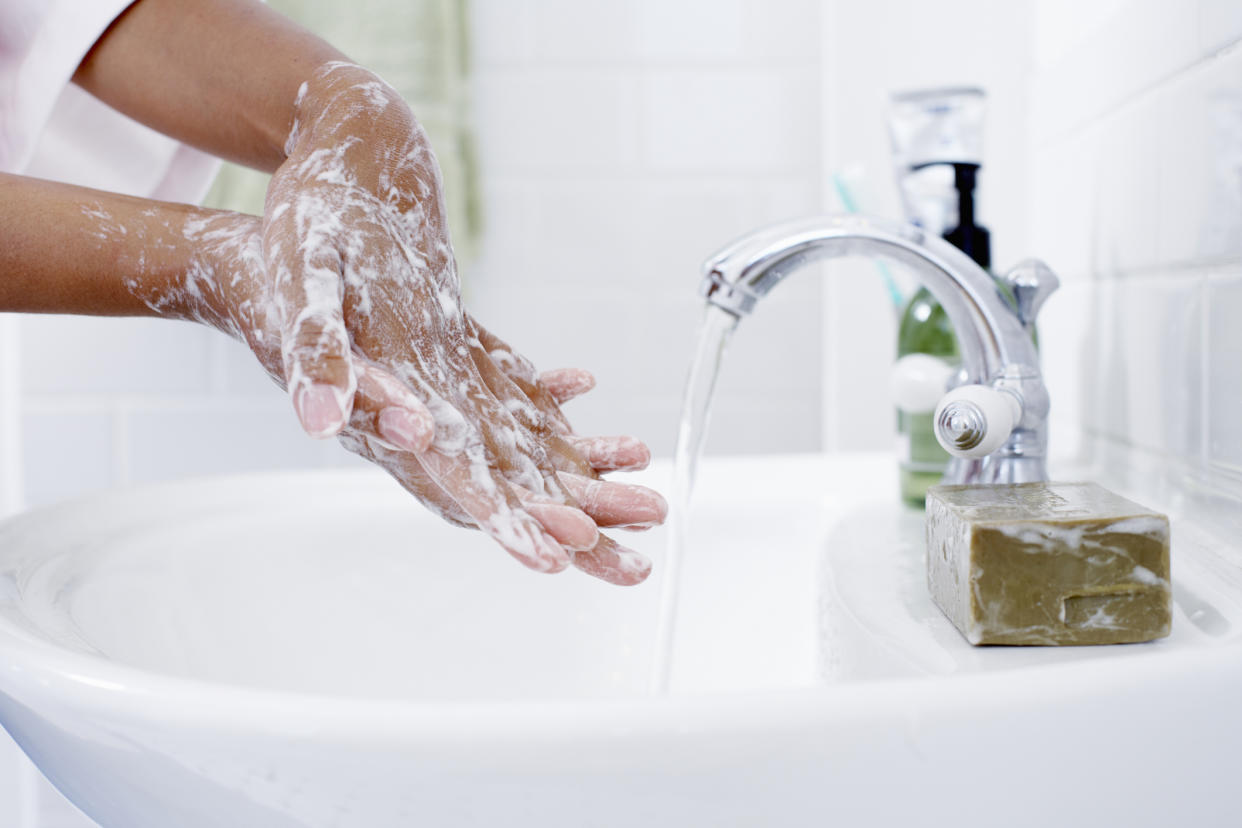The biggest mistakes you're making while washing your hands

Health experts say it all the time: Whether it’s the coronavirus or the flu, washing your hands is one of the most effective ways of stopping the spread of germs.
But how often have you noticed someone at a public restroom flit their fingers under the tap for two seconds flat? Or have a decent scrub only to open the bathroom door with their bare hands?
And it’s not enough to lather up only after using the toilet. Washing your hands the right way, multiple times throughout the day, is what will help you and people around you stay healthy.
In fact, 80 per cent of common infections are spread by hands, according to the B.C. Centre for Disease Control. Washing your hands at least five times a day has been shown to significantly decrease the frequency of colds, influenza, and other infections.
“Frequent and proper hand washing is important inn preventing spread of illness,” says Vancouver Coastal Health acting senior Environmental Health Officer Kuljeet Chattha. “Hands should be washed after coming into contact with any possible contaminant: after eating or handling food; using the phone; going to the bathroom; or touching different surfaces.”
To make sure you’re practising proper hygiene, here’s are essential hand-washing dos and don’ts:
DO
Wet hands with warm water.
Apply plain liquid soap. “Sometimes people forget to use soap. It’s very important,” Chattha says. “It breaks up the dirt and soil.”
Lather vigorously for at least 20 to 30 seconds. An easy way to gauge this duration is to sing “Happy Birthday” or “Twinkle, Twinkle Little Star” twice, at regular speed (not on fast forward).
Rub your hands palm to palm then place one palm on the back of the other hand and switch sides.
Scrub your wrists and between the fingers.
Scrub under the nails. If you have short nails, you can rub underneath with your fingers or trace little circles on the palm of the opposite hand with your fingertips. For long nails, use a scrubbing brush.
Rinse your hands well for 10 seconds under warm running water, still using a rubbing motion. “Rinse with the hands pointing toward the drain so everything goes into the drain,” Chattha says.
Dry your hands with paper towels.
Use paper towels to open the door.
If soap isn’t available, use towelettes to remove soil, then use an alcohol-based hand rub containing at least 60 percent alcohol.
Wash your hands as soon as you get home. “I go directly to the sink; it’s the first thing I do,” Chattha says. “It’s the same with my kids.”
DON’T
Overlook all the shared objects at home, at work, and in public places that could be harbouring germs from unwashed hands: toys, keyboards, remote controls, handles, doorknobs, mobile phones, tables, desks, light switches, microwaves, kettles, appliances, and so on.
Forget to wash hands after feeding someone else, changing diapers, caring for someone who is sick, performing first aid, inserting and removing contact lenses, flossing your teeth, breastfeeding, blowing your nose, feeding or caring for pets; coughing or sneezing, and touching garbage.
Use antibacterial agents. These kill good bacteria that live on the hands, may contribute to antibiotic resistance, and increase the amount of antibiotics in the water supply. Plain soap will remove the dirt and grease that attract bad bacteria.
Expect kids to know how to wash hands properly. Lead by example and supervise them when they’re washing their hands.
Leave bar soap in a dish that collects water, which attracts germs; use a self-draining holder that can be cleaned before a new bar is added.
Let us know what you think by commenting below and tweeting @YahooStyleCA! Follow us on Twitter and Instagram.



